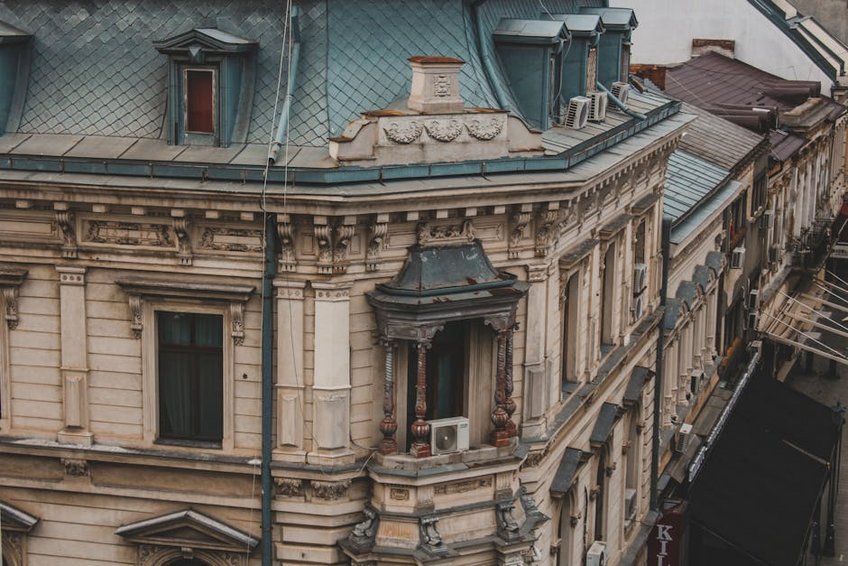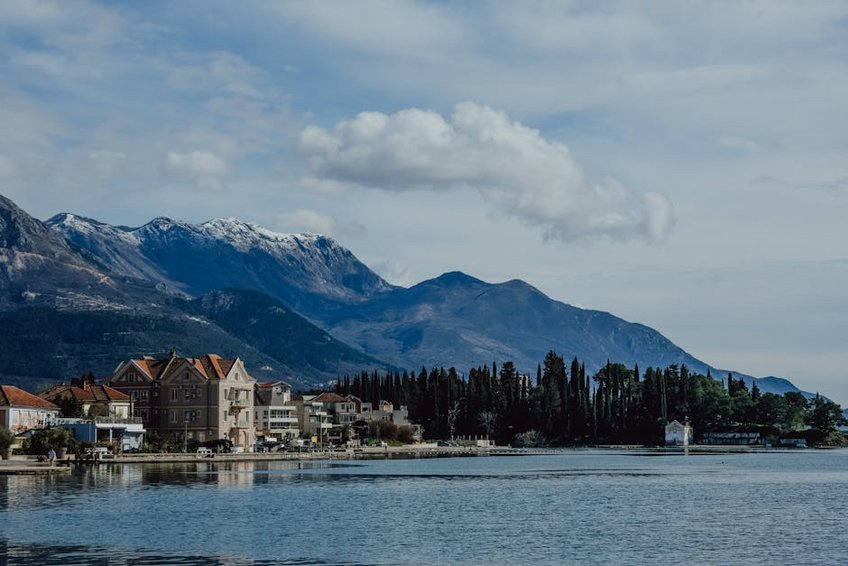Balkan Breeze Routes and Hospitality
Imagine winding mountain roads revealing breathtaking vistas, coastal drives with the Adriatic sparkling beside you, and welcoming villages where hospitality isn’t just a service—it’s a way of life. This is the essence of Balkan Breeze Routes and Hospitality, an experience that combines some of Europe’s most spectacular road trips with genuinely warm encounters that will stay with you long after you return home. From the rugged peaks of Montenegro to the pristine beaches of Albania and the historic towns of Bosnia, the Balkans offer an unparalleled journey for those seeking authentic connections and unforgettable landscapes. The region’s unique blend of cultures, languages, and traditions creates a tapestry of experiences that feels both exotic and comforting, where every turn brings new discoveries and every stop feels like visiting family. You’ll find that the famous Balkan hospitality isn’t just a marketing slogan—it’s a deeply ingrained cultural value that transforms ordinary travel into extraordinary memories.
Balkan Breeze Routes and Hospitality – Essential Information
Before embarking on your Balkan adventure, understanding the region’s geography and cultural context will significantly enhance your experience. The Balkan Peninsula encompasses countries like Croatia, Montenegro, Albania, Bosnia and Herzegovina, Serbia, North Macedonia, and sometimes includes Slovenia, Romania, and Bulgaria depending on definitions. What makes Balkan Breeze Routes so special is the incredible diversity packed into a relatively compact area—you can experience Mediterranean coastlines, alpine mountains, deep forests, and vibrant cities all within a few hours’ drive. The hospitality aspect shines through in family-run guesthouses, local restaurants where recipes have been passed down for generations, and the genuine curiosity locals show toward visitors. You’ll notice that service here feels personal rather than transactional, with many business owners taking genuine pride in sharing their culture and ensuring you have a memorable stay.
Understanding the Balkan Region – What You Need to Know
- The Balkans comprise approximately 10 countries, each with distinct cultural identities but shared historical influences from Ottoman, Venetian, and Austro-Hungarian empires
- English is widely spoken in tourist areas, but learning basic phrases in local languages (especially “thank you” and “hello”) will be greatly appreciated
- Road conditions vary significantly—modern highways connect major cities while rural routes might be narrow and winding but incredibly scenic
- Budget travelers can manage with $40-60 USD daily using hostels, public transport, and self-catering—especially in Albania, Bosnia, and North Macedonia
- Mid-range comfort costs $80-120 USD daily for private rooms, rental cars, restaurant meals, and paid attractions throughout most Balkan countries
- Luxury experiences range $150-300+ USD daily for boutique hotels, private guides, fine dining, and exclusive activities particularly in Croatia and Montenegro
- Balkan Insight – Regional News and Culture
- Rough Guides Balkan Travel Information
- Serbian National Tourism Organization
- Croatian National Tourism Board
Cultural Context and Historical Background
To truly appreciate Balkan hospitality, it helps to understand the region’s complex history. For centuries, the Balkans served as a crossroads between East and West, resulting in a rich cultural fusion that manifests in architecture, cuisine, and social customs. The concept of “guest privilege” is deeply rooted here—an ancient tradition that treats visitors with utmost respect and generosity. This isn’t just tourism industry training; it’s a cultural value passed down through generations. You’ll experience this in small gestures: the extra dessert brought to your table, the homemade rakija (fruit brandy) offered as welcome drink, or the detailed directions given by locals who might even escort you to ensure you don’t get lost. This generosity often feels particularly striking given that many Balkan countries have faced significant challenges in recent decades, making their warmth toward visitors even more meaningful.

Balkan Breeze Routes and Hospitality – Planning Your Trip
Careful planning will help you make the most of your Balkan journey while accommodating the region’s seasonal variations and infrastructure considerations. The ideal itinerary depends on your interests—whether you prioritize coastal beauty, mountain adventures, cultural sites, or culinary experiences. For first-time visitors, a 2-3 week road trip covering Croatia’s Dalmatian Coast, Montenegro’s Bay of Kotor, and Albania’s Riviera provides a fantastic introduction to Balkan diversity. Shoulder seasons (May-June and September-October) offer the perfect balance of pleasant weather, manageable crowds, and lower prices. Winter visits appeal to ski enthusiasts in Slovenia, Bosnia, or Bulgaria, while summer brings vibrant energy to coastal areas despite higher prices and crowds. Remember that distances might look short on maps but travel times can be longer due to mountainous terrain and border crossings, so build in flexibility and don’t over-schedule your days.
Best Time to Experience Balkan Routes and Hospitality
The optimal time for Balkan travel depends on your priorities. April through June offers wildflowers, comfortable temperatures (15-25°C/59-77°F), and fewer crowds, though higher elevations might still have snow. July and August bring peak season energy with warm Mediterranean weather (25-35°C/77-95°F), vibrant nightlife, and all amenities open, but also higher prices and crowded coastal areas. September and October provide golden autumn colors, harvest festivals, warm sea temperatures, and a more relaxed pace perfect for road trips. November through March sees many coastal businesses close but offers fantastic skiing, thermal spas, and cultural experiences in cities with Christmas markets and lower accommodation rates. Regardless of season, the famous Balkan hospitality remains constant—you might just experience it in cozy mountain lodges rather than beachfront restaurants.
Budget Planning and Costs
Essential Preparation Checklist
Preparing properly will ensure smooth travels through the Balkans. First, check visa requirements—EU and US passport holders typically get 90-day visa-free access to most Balkan countries, but some like Kosovo have specific entry rules. Ensure your passport has at least six months validity from your departure date. For road trips, an International Driving Permit is recommended alongside your national license, and purchase extra insurance coverage for Montenegro and Albania’s more challenging roads. Pack for diverse conditions—light layers for coastal areas, warmer clothing for mountains, modest attire for religious sites, and comfortable walking shoes for cobblestone streets. Download offline maps since cellular coverage can be spotty in remote areas, and carry some euros or local currency as credit cards aren’t universally accepted outside major tourist centers.
Balkan Breeze Routes and Hospitality – Top Attractions and Activities
The Balkans offer an incredible variety of experiences that showcase both natural beauty and human warmth. Coastal routes like Croatia’s Dalmatian Coast or Albania’s Riviera provide stunning sea views, hidden coves, and charming fishing villages where you can enjoy fresh seafood at family-run konobas (taverns). Inland, the mountainous regions of Montenegro, Bosnia, and North Macedonia reveal dramatic landscapes, medieval monasteries, and traditional villages where time seems to stand still. Cultural enthusiasts will treasure Mostar’s Stari Most bridge, Dubrovnik’s ancient walls, Ohrid’s Byzantine churches, and Belgrade’s vibrant nightlife. What makes these experiences special is how they’re enhanced by local hospitality—whether it’s a vineyard owner explaining their winemaking tradition, a shepherd offering cheese samples, or a family inviting you to share their homemade meal. These authentic interactions transform standard sightseeing into meaningful connections.
Must-See Highlights
No Balkan journey is complete without experiencing certain iconic destinations that perfectly encapsulate the region’s appeal. Croatia’s Plitvice Lakes National Park features turquoise waters cascading through forested valleys—arrive early to avoid crowds and consider staying at nearby family-run pensions for authentic experiences. Montenegro’s Bay of Kotor combines fjord-like scenery with medieval architecture—drive the serpentine road to Lovćen National Park for breathtaking views and enjoy seafood dinners in Perast where restaurant owners often share local legends. Albania’s Butrint National Park blends ancient ruins with natural beauty—nearby families sometimes offer homemade olive oil and citrus fruits from their gardens. Bosnia’s Mostar bridge represents symbolic unity—local guides provide powerful perspectives on the region’s history and resilience. Each destination shines not just for its physical beauty but for the human stories and warmth you’ll encounter there.
Hidden Gems and Local Favorites
Beyond the famous sites lie countless lesser-known treasures where Balkan hospitality feels most authentic. In Croatia, visit the Pelješac Peninsula for world-class wines at family vineyards where owners host intimate tastings with personal stories. Montenegro’s Durmitor National Park offers spectacular hiking with mountain hut stays where hosts prepare hearty traditional meals. Albania’s Theth Valley features remote villages accessible via thrilling mountain roads—guesthouse owners often organize guided hikes to waterfalls and traditional dinners. Bosnia’s Una National Park boasts emerald rivers and waterfalls—local families run riverside restaurants serving freshly caught trout. North Macedonia’s Lake Matka provides canyon boat tours followed by meals at family restaurants carved into cliffs. Serbia’s Drina River House offers photogenic solitude—nearby villagers happily share stories about this unique structure. These experiences highlight how Balkan hospitality transforms beautiful locations into personally meaningful destinations.
Balkan Breeze Routes and Hospitality – Practical Travel Information
Navigating the Balkans requires understanding the region’s transportation options, accommodation varieties, and practical considerations. Road trips offer the most flexibility for experiencing diverse landscapes, with rental cars available from major airports (from $25-50 USD daily). Border crossings between Balkan countries have improved significantly but can still involve waits—avoid weekends and check real-time waiting times online. Trains connect major cities comfortably but slowly, while buses provide extensive coverage to smaller towns. Accommodation ranges from international hotels in cities to family-run guesthouses (pensions) in rural areas, where hosts often provide homemade breakfasts and personalized advice. The hospitality aspect shines particularly in smaller establishments—it’s common for hosts to offer arrival drinks, help plan itineraries, or even invite guests to family gatherings. This personal touch makes Balkan travel uniquely rewarding compared to more commercialized destinations.
| Category | Options/Features | Price Range (USD) |
|---|---|---|
| Accommodation | Hostels, family pensions, boutique hotels, apartments | $15-150 nightly |
| Transportation | Rental cars, buses, trains, ferries (coastal) | $20-100 daily |
| Dining | Street food, family restaurants, fine dining | $5-40 per meal |
| Activities | National parks, guided tours, museums, adventures | $5-80 per activity |


